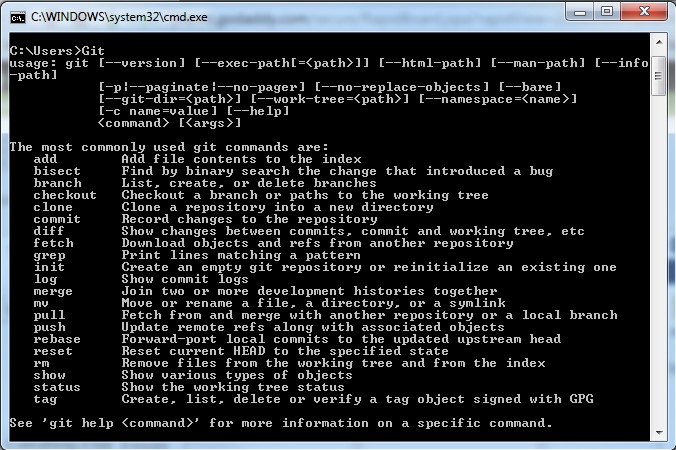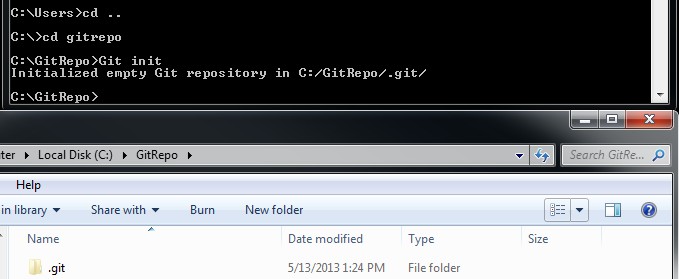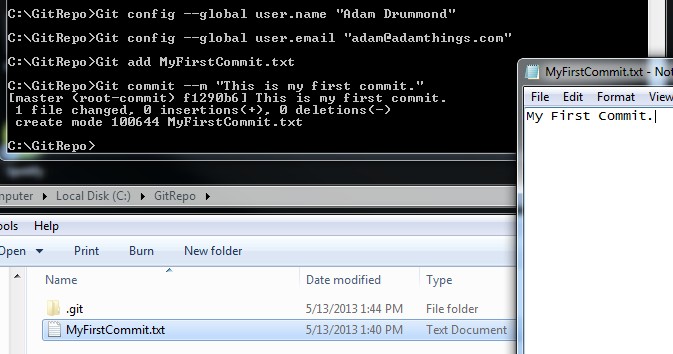Here are transition steps for a solution from TFS over to GitHub using Git Extensions. We will establish a repository on GitHub and create a feature branch.
Step 1. Establish repo in Github
- On the homepage of your GitHub account, there is a green but that says ‘New Repository’; Click it.
- Change the Owner to Your Account
- Enter your Repository Name.
- Select Private/Public (Your Preference)
- Add .gitignore for CSharp (Pick applicable language. This keeps git from version-ing unnecessary files)
Step 2. Establish master code branch (contains current production code)
- Create a Directory at C:\Git
- Right-Click on C:\Git and GitEx Clone
- Repository to Clone: https://github.com/YourAccount/RepositoryName.git (GitHub given location)
- Destination C:\Git
- Everything else blank.
- (May be prompted for credentials: These are the credentials you log in to github.com with)
- Copy Source code from your TFS location or wherever into C:\Git
- May take awhile depending how big code solution is
- Right-Click on C:\Git
- GitEx Commit
- Stage All (May take awhile)
- Add a comment then ‘Commit & push’
- Will do intial commit, (click ok) then bring up push dialog, and wait again… for a while…then Ok.
Now you should be able to look on the GitHub site and see all the files you just pushed.
Step 3. Establish Feature Crew branches
- Create branch locally (Don’t need to check it out)
- Right-Click on your local Repository (ex c:\Git)
- Git Extensions
- Enter Branch Name (ex: FeatureCrewBranch)
- Deselect Checkout after create
- Create Branch
- Right-Click on your local Repository (ex c:\Git)
- Push FeatureCrewBranch to remote (Branch to push FeatureCrewBranch to FeatureCrewBranch)
- Right-Click on your local Repository (ex c:\Git)
- Git Extensions
- Push
- Remote origin (Master)
- Branch to push FeatureCrewBranch to FeatureCrewBranch
- Add tracking reference
- Right-Click on your local Repository (ex c:\Git)
4. Probably will want to compress Git database
- Right Click on your local repository (ex. C:\Git)
- Select Git GUI
- Select compress the db now (Popped up a window for me..will take a bit)
- If no pop up shows
- Click Repository in top left
- Compress Database
- If no pop up shows
It’s not the hardest process, but it is kind of confusing. Please let me know if you have any ideas or clarifications that we can make.





Recent Comments